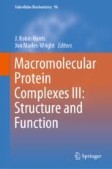Search
Search Results
-
Opposing USP19 splice variants in TGF-β signaling and TGF-β-induced epithelial–mesenchymal transition of breast cancer cells
Ubiquitin-specific protease (USP)19 is a deubiquitinating enzyme that regulates the stability and function of multiple proteins, thereby controlling...

-
Coupling of co-transcriptional splicing and 3’ end Pol II pausing during termination in Arabidopsis
BackgroundIn Arabidopsis, RNA Polymerase II (Pol II) often pauses within a few hundred base pairs downstream of the polyadenylation site, reflecting...

-
Genome features and secondary metabolite potential of the marine symbiont Streptomyces sp. RS2
Streptomyces sp. RS2 was isolated from an unidentified sponge collected around Randayan Island, Indonesia. The genome of Streptomyces sp. RS2...

-
Splicing modulators: on the way from nature to clinic
Over the course of more than two decades, natural products isolated from various microorganisms and plants have built the foundation for chemical...

-
Screening and Analysis of Actinobacterial Bioherbicides for Weed Management
Weeds are severe agriculture threats, affecting the plants by depleting the soil nutrients, water, growth area, sunlight, and attract pests. If left...
-
Biosynthetic pathway of peucemycin and identification of its derivative from Streptomyces peucetius
AbstractStreptomyces peucetius ATCC 27952 is a well-known producer of important anticancer compounds, daunorubicin and doxorubicin. In this study,...

-
CRISPR/Cas-mediated germplasm improvement and new strategies for crop protection
Global agriculture and food security are encountering unprecedented challenges from both the ever-growing population and rapidly changing climate...

-
The SF3b Complex is an Integral Component of the Spliceosome and Targeted by Natural Product-Based Inhibitors
In this chapter, the essential role of the SF3b multi-protein complex will be discussed in the context of the overall spliceosome. SF3b is critical...
-
Overlap** roles of spliceosomal components SF3B1 and PHF5A in rice splicing regulation
The SF3B complex, a multiprotein component of the U2 snRNP of the spliceosome, plays a crucial role in recognizing branch point sequence and...

-
Genome sequence analysis and bioactivity profiling of marine-derived actinobacteria, Brevibacterium luteolum, and Cellulosimicrobium funkei
Genome analysis gives important insights into the biosynthetic potential of marine actinobacteria. The genomes of two marine actinomycetes Brevibacteri...

-
Intergenic splicing-stimulated transcriptional readthrough is suppressed by nonsense-mediated mRNA decay in Arabidopsis
Recent emerging evidence has shown that readthrough transcripts (RTs), including polycistronic mRNAs, are also transcribed in eukaryotes. However,...

-
Microbial Metabolites as Pesticides
Beneficial microbes used for the control of crop pests have one or more modes of action against their target arthropods, nematodes, pathogens, or...
-
Evolution-aided engineering of plant specialized metabolism
The evolution of new traits in living organisms occurs via the processes of mutation, recombination, genetic drift, and selection. These processes...

-
CRISPR/Cas-mediated genome editing in sorghum — recent progress, challenges and prospects
Sorghum is a versatile crop with great potential as a sustainable food, feed, and bioenergy source. To mitigate the severely negative impact of...

-
Draft genome sequence of Streptomyces tunisialbus DSM 105760T
Streptomyces strains are well known as promising source of bioactive secondary metabolites, important in ecology, biotechnology and medicine. In this...
-
Herboxidiene triggers splicing repression and abiotic stress responses in plants
BackgroundConstitutive and alternative splicing of pre-mRNAs from multiexonic genes controls the diversity of the proteome; these precisely regulated...

-
Applications of CRISPR–Cas in agriculture and plant biotechnology
The prokaryote-derived CRISPR–Cas genome editing technology has altered plant molecular biology beyond all expectations. Characterized by robustness...

-
Application of CRISPR/Cas9-mediated gene editing for the development of herbicide-resistant plants
Herbicide resistance is one of the most important traits for plant biotechnology, which is widely used to improve agricultural efficiency by...

-
Genome Editing Crops in Food and Futuristic Crops
The advent of Second Green Revolution for nutritional security to feed the burgeoning world population amidst the challenges is related to climate...
-
Identification of a novel glucuronyltransferase from Streptomyces chromofuscus ATCC 49982 for natural product glucuronidation
AbstractGlycosylation is an effective way to increase the polarity of natural products. UDP-glucuronyltransferases (UGTs) are commonly observed and...

